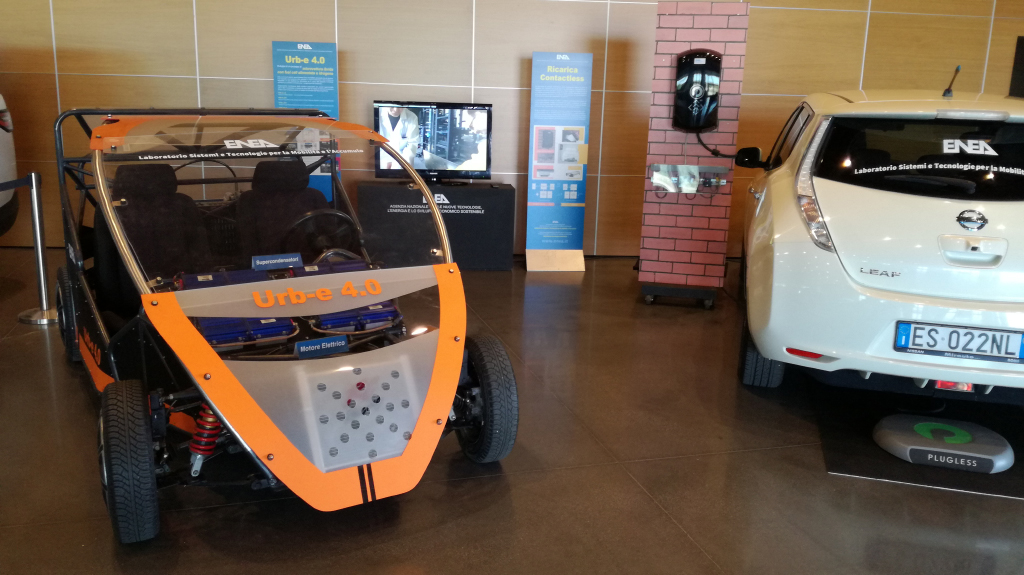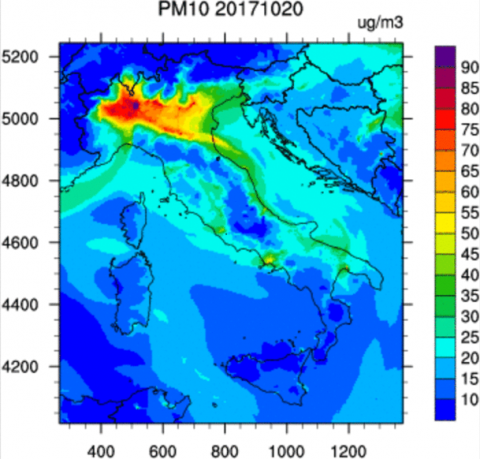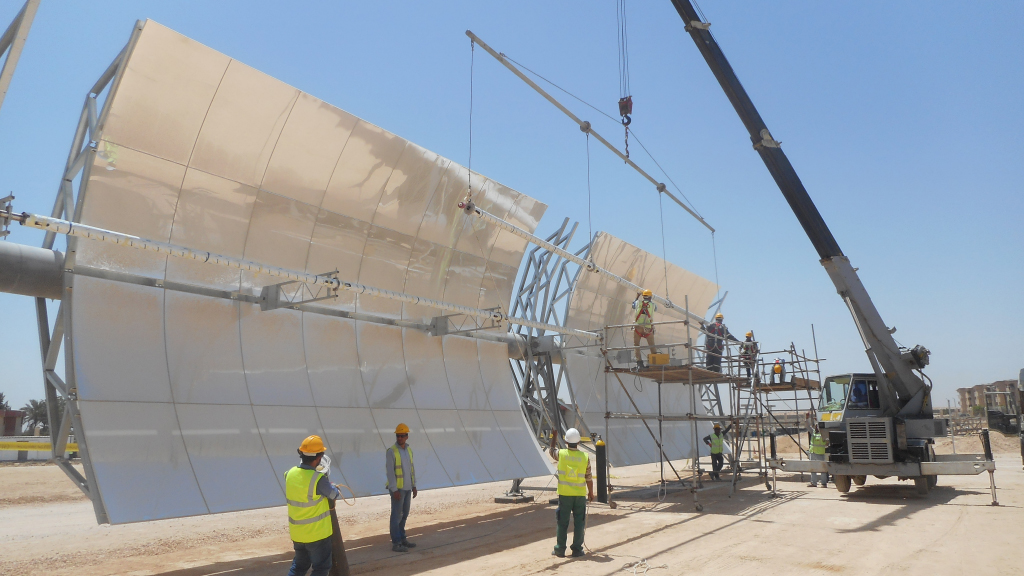New technology for mobility, power plants, and smog alert
23/11/2017
An “antismog” hybrid city car (electric + hydrogen), an innovative air pollution forecasting system and mini solar power plants are some of the technologies ENEA presented at the International Trade Fair Ecomondo /Key Energy/Sustainable City.
 It overcomes the problems related to recharging from the grid (plug-in), thanks to a hydrogen-powered fuel cell. It’s Urb-e 4.0, the new generation of zero-emission city cars developed at ENEA. After the first petrol hybrid version, then pure electric with lead batteries and supercondensators and lithium-ion batteries, here comes the model 4.0, which works with a very small fuel cell powered by two ten litre hydrogen cylinders.
It overcomes the problems related to recharging from the grid (plug-in), thanks to a hydrogen-powered fuel cell. It’s Urb-e 4.0, the new generation of zero-emission city cars developed at ENEA. After the first petrol hybrid version, then pure electric with lead batteries and supercondensators and lithium-ion batteries, here comes the model 4.0, which works with a very small fuel cell powered by two ten litre hydrogen cylinders.
The 4kW battery is recharged in four hours and has a 80 km range at a cost of about 3 euro for the hydrogen, while the cylinders, once exhausted, can be easily replaced. “Currently in Italy the cost of hydrogen is €9,50/kg, with the objective of decreasing it to €5/kg by 2025. For our Country there is a strategic plan for hydrogen mobility by 2050, accepted and included in Legislative Decree 257/2016 for the creation of a distribution infrastructure for alternative fuels“, Giovanni Pede, Head of the ENEA Laboratory “Systems and Technologies for Mobility and Storage” explained.
A modification to the vehicle management software is under way, which will allow the fuel cell, when running at a constant speed, to directly power the electric traction motor avoiding battery losses, with a 20% efficiency recovery.
 The innovative hourly air pollution forecasting system “ForAir IT” is capable of predicting air quality for three-five days with an accuracy never before attained a national scale (areas the size of a small italian town).
The innovative hourly air pollution forecasting system “ForAir IT” is capable of predicting air quality for three-five days with an accuracy never before attained a national scale (areas the size of a small italian town).
“Thanks to the computing power of the ENEA CRESCO4, it’s possible to know in advance the concentrations of dangerous air pollutants such as particulate matters, nitrogen oxides and ozone”, Gabriele Zanini, Head of the ENEA Division “Models and Technologies for the Reduction of Anthropic Impacts and Natural Hazards, pointed out. This systems enables us to achieve un unprecedented level in mapping air pollutants in Italy, so that municipalities can adopt timely antismog measures, especially in winter, when levels of nitrogen oxide and particulate matter PM10 and PM12 often exceed legal values, particularly in the Pianura Padana and in big cities”.
 And more about air quality with the production of green electricity from mini solar plants, such as the four small scale concentrated solar plants built in Egypt, Cyprus, Jordan and Italy (Palermo), with the project STS-Med (Small Scale Thermal Solar distric units for Mediterranean communities) with the participation of 14 partners including ENEA. Equipped with innovative energy storage systems, the mini plants produce a total of over 450 kW and, in addition to electricity, provide air conditioning in public buildings for a total of about 20.000 people per year and services such as desalination and treatment of water, key to some local communities in the Mediterranean basin.
And more about air quality with the production of green electricity from mini solar plants, such as the four small scale concentrated solar plants built in Egypt, Cyprus, Jordan and Italy (Palermo), with the project STS-Med (Small Scale Thermal Solar distric units for Mediterranean communities) with the participation of 14 partners including ENEA. Equipped with innovative energy storage systems, the mini plants produce a total of over 450 kW and, in addition to electricity, provide air conditioning in public buildings for a total of about 20.000 people per year and services such as desalination and treatment of water, key to some local communities in the Mediterranean basin.
The 1MW solar concentration plant built in Egypt under the project MATS (Multipurpose Application by Thermodynamic Solar) coordinated by the Agency, employs ENEA technologies. “It’s a small sized solar plant and it can work both off-grid and connected. The system can meet the energy needs of a community of over 1.000 people and produce about 250 m3 of desalinated water per day” Alberto Giaconia, at the ENEA Laboratory “Engineering of Solar technologies” explained.
The system uses molten salts at a maximum temperature of 550°C as process fluid and a thermal storage system allowing to distribute energy also in absence of solar radiation. The plant can be integrated with biomass powered generators, ensuring greater continuity in elecricity production, especially at night and in winter.
For more information please contact:
Giovanni Pede, Laboratory of Systems and Technologies for Mobility and Storage, giovanni.pede@enea.it
Gabriele Zanini, Division of Models and Technologies for the Reduction of Anthropic Impacts and Natural Hazards, gabriele.zanini@enea.it
Alberto Giaconia, Laboratory of Engineering of Solar Technologies, alberto.giaconia@enea.it
